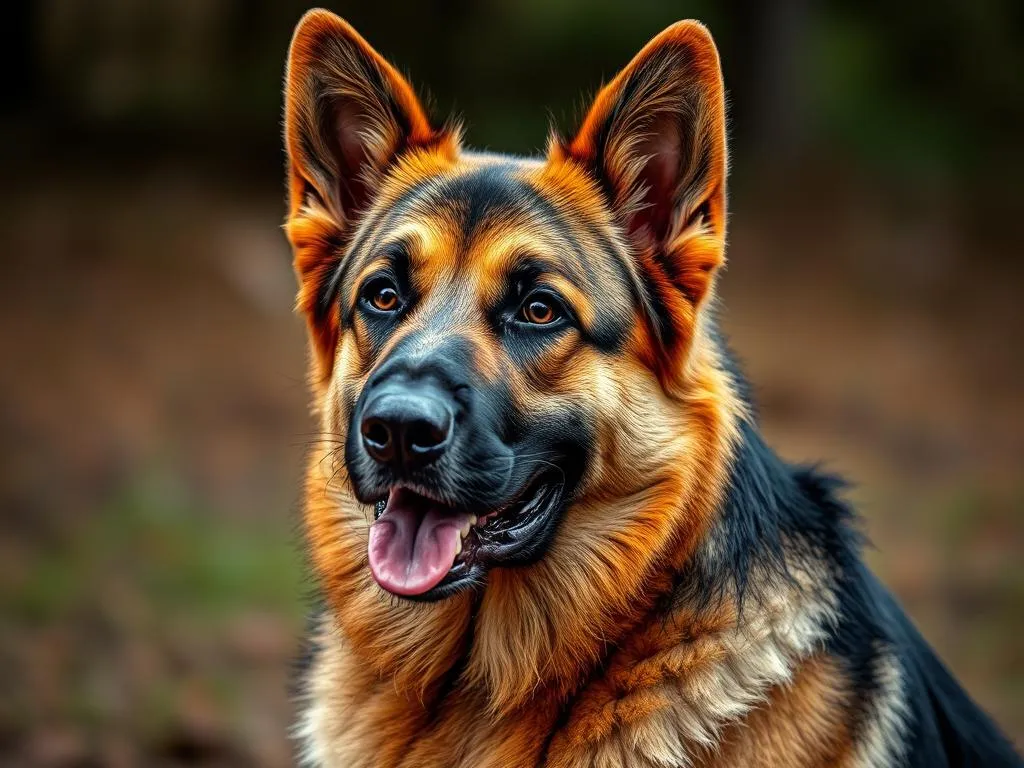
Introduction
Schutzhund is a dog sport that combines various disciplines to evaluate a dog’s capabilities in tracking, obedience, and protection. Originating in Germany, this sport was initially developed as a test for working dogs, particularly German Shepherds, ensuring they possessed the traits necessary for tasks like police work and protection. Today, Schutzhund has evolved into a vibrant community that emphasizes the bond between dog and handler, making it a significant lifestyle choice for many dog enthusiasts.
In this article, we will delve into the intricacies of Schutzhund, exploring its history, the structure of the sport, its benefits for both dogs and owners, and how to get started. We will also address common misconceptions surrounding the sport to provide a well-rounded understanding of what Schutzhund truly entails.
Understanding Schutzhund
Definition and Purpose
At its core, Schutzhund is a comprehensive training and evaluation system for dogs. The term itself translates to “protection dog” in German, encapsulating its primary focus areas: protection, tracking, and obedience. The main objectives of the sport are to assess a dog’s temperament, working ability, and trainability.
Dogs participating in Schutzhund are put through rigorous tests that measure their skills in various scenarios, showcasing not just their physical prowess but also their mental acuity. This sport is not solely about aggression or protection; it emphasizes the importance of a well-rounded canine companion.
Historical Background
The roots of Schutzhund can be traced back to the early 20th century in Germany. It was developed as a means to evaluate working dogs, particularly the German Shepherd breed. The sport’s inception was driven by the need for a standardized method to assess a dog’s suitability for work in fields like law enforcement and search-and-rescue operations.
Over the years, Schutzhund has seen significant evolution, with various organizations forming to promote and standardize the sport. Key milestones include the establishment of the Verein für Deutsche Schäferhunde (SV) in 1899, which laid the groundwork for the sport’s rules and regulations.
Types of Schutzhund Training
Training in Schutzhund encompasses three main disciplines:
- Obedience Training: Focuses on commands and the dog’s ability to follow them in various environments, proving their attentiveness and discipline.
- Tracking Exercises: Involves the dog following a scent trail, demonstrating their natural instincts and sharp sense of smell.
- Protection Work: Tests the dog’s ability to protect their handler while displaying controlled aggression and defense techniques.
Each type of training is designed to promote a well-rounded and balanced dog, equipped with various skills essential for real-world scenarios.
The Schutzhund Sport
Structure of Schutzhund Trials
Schutzhund trials consist of three phases: tracking, obedience, and protection work. Each phase is carefully structured, with specific tasks that dogs must complete to showcase their skills.
-
Tracking: Dogs are required to follow a scent trail laid by a person. The trial evaluates the dog’s ability to stay focused and accurately track the trail over varying distances and terrains.
-
Obedience: This phase assesses the dog’s responsiveness to commands, including heeling, recall, and other obedience exercises. Scoring is based on precision and the dog’s ability to perform tasks under distractions.
-
Protection: In this final phase, dogs must demonstrate their protective instincts. They are evaluated on their ability to engage with a decoy while maintaining control and following commands from their handler.
Each phase is scored on a point system, and overall performance determines the dog’s success in the trial.
Importance of Titles
Titles in Schutzhund reflect a dog’s skill level and achievements. Common titles include:
- BH (Begleithund): A companion dog title that assesses basic obedience and temperament.
- SchH (Schutzhund): Indicates proficiency in the three disciplines of tracking, obedience, and protection.
- IPO (International Prüfungsordnung): An international title that follows similar standards to SchH but is recognized worldwide.
These titles not only signify a dog’s capabilities but also enhance the owner’s credibility and knowledge in handling their dog.
Schutzhund Associations and Organizations
Several key organizations play a vital role in the promotion and standardization of Schutzhund. The SV (Verein für Deutsche Schäferhunde), established in Germany, is one of the most prominent, focusing on the German Shepherd breed. In the United States, organizations like USA Schutzhund provide resources, competitions, and training opportunities for enthusiasts.
These associations ensure that the sport maintains its integrity and standards, promoting responsible training practices and fostering community engagement among participants.
Benefits of Schutzhund Training
For Dogs
Engaging in Schutzhund training offers numerous benefits for dogs:
- Development of Discipline and Obedience: Dogs learn essential commands and behaviors that enhance their overall conduct and reliability.
- Physical Fitness and Mental Stimulation: The diverse training exercises ensure that dogs are both physically active and mentally challenged, reducing behavioral issues stemming from boredom.
- Strengthening the Dog-Owner Bond: The collaborative nature of training fosters a deep connection between dog and handler, built on trust and mutual respect.
For Owners
Owners also reap significant rewards from participating in Schutzhund:
- Enhanced Understanding of Canine Behavior: Training requires owners to learn about their dog’s body language and behavior, leading to better communication and care.
- Opportunities for Socialization and Community Involvement: Schutzhund brings together dog lovers, creating a supportive network where owners can share experiences and tips.
- Personal Satisfaction and Achievement: Completing training and achieving titles can instill a sense of accomplishment and pride in both the owner and the dog.
Lifestyle Enhancement
Beyond personal gains, Schutzhund can enhance one’s lifestyle:
- A Fulfilling Hobby: For many dog owners, Schutzhund becomes a passion that provides joy and excitement.
- Impact on Physical Activity and Outdoor Engagement: Training often involves outdoor activities, encouraging owners to spend more time in nature and staying active.
- Building a Support Network: The community aspect of Schutzhund fosters friendships and collaborations among enthusiasts, enriching social lives.
Getting Started with Schutzhund
Choosing the Right Dog
Not all dogs are suited for Schutzhund training. When selecting a dog, consider:
- Breeds Commonly Associated with Schutzhund: German Shepherds, Belgian Malinois, and Rottweilers are among the most popular breeds due to their working abilities and temperament.
- Factors to Consider: Evaluate the dog’s temperament, energy level, and age. A dog with a strong drive and eagerness to work will thrive in Schutzhund training.
Finding Training Resources
Getting started with Schutzhund requires access to the right resources:
- Local Clubs and Training Facilities: Joining a local Schutzhund club can provide invaluable hands-on training and mentorship from experienced handlers.
- Online Resources and Virtual Training Options: Many online platforms offer tutorials, courses, and community forums for dog owners looking to enhance their skills.
- Importance of Certified Trainers: Working with certified trainers ensures that training methods are effective and humane, promoting a positive experience for both dog and handler.
Training Techniques and Tips
Effective training is crucial for success in Schutzhund. Here are some foundational techniques:
- Basic Commands and Foundation Training: Start with essential commands like sit, stay, and come to lay a strong foundation for advanced training.
- Importance of Positive Reinforcement: Utilizing treats and praise encourages dogs to learn and perform desired behaviors, fostering a positive training environment.
- Gradual Progression to Advanced Training: As dogs master basics, gradually introduce more complex exercises to build their confidence and skill.
Common Misconceptions about Schutzhund
Schutzhund as a Dangerous Sport
One prevalent misconception is that Schutzhund promotes aggression in dogs. In reality, the sport emphasizes control and responsible training practices. Dogs are trained to respond to commands rather than act aggressively, ensuring they are well-behaved companions.
Exclusivity to Certain Breeds
Another myth is that Schutzhund is only for certain breeds. While some breeds are more commonly associated with the sport, many dogs can participate with the right temperament and training. Mixed breeds and other working breeds can thrive in Schutzhund environments.
Schutzhund vs. Other Dog Sports
Schutzhund is often compared to other dog sports such as obedience and agility. However, its unique combination of tracking, obedience, and protection work sets it apart. This multifaceted approach ensures that dogs are not only physically fit but also mentally stimulated, providing a comprehensive training experience.
Conclusion
In summary, Schutzhund is more than just a dog sport; it is a lifestyle choice that offers numerous benefits for dogs and their owners alike. From developing discipline and enhancing the human-canine bond to fostering community engagement, Schutzhund provides a fulfilling and enriching experience.
Whether you are a seasoned dog owner or a novice looking to explore new avenues, consider the rewarding journey of Schutzhund training. The skills learned and friendships formed along the way can lead to personal growth and a deeper understanding of the incredible bond you share with your canine companion.
The world of Schutzhund awaits, offering a vibrant community and a plethora of opportunities for growth, both for you and your dog.









